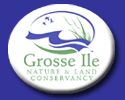

Steps in the Donation of Land or the Creation of a Conservation Easement
For parties interested in pursuing a land donation or an easement, certain legal requirements are essential. The following steps are only guidelines and there is a great deal of flexibility in them. Since the donors are the recipient of the tax benefits, it is in your best interests to work closely with your own counselors. You should also check with your counselors to determine if the costs involved are tax deductible. The Conservancy will work closely with prospective donors and/or their representatives to arrive at an amicable agreement.
1. Property Evaluation
Notify the Conservancy of your intent and members of the Conservancy Land Acquisition Committee will evaluate your property to determine if your property meets the Conservancy's criteria for accepting land and/or easements. A member of the committee will notify you of the committee's decision.
2. Discussion of Donorís Objectives
If your property meets the Conservancy criteria, members of the Conservancy will meet with you to discuss your objectives for your donation. They will then review your requests and the options available regarding uses, restrictions, funding for resource protection and long term management for the land in question. The Conservancy suggestions will be forwarded to you.
3. Discussion With Donorís Advisors
For your protection, you must then review these suggestions with your personal tax and legal advisors to insure your donation will meet IRS tax exemptions for donations and/or easements.
4. Conservancy Board Review
If you then decide to proceed with your donation, Land Acquisition Committee members will review the property and the Conservancy commitments to it with the Conservancy Board of Directors for Board approval.
5. Baseline Documentation Report
Following Board approval, the Conservancy will prepare a "Baseline Documentation Report" to be signed by you as acknowledgment of the condition of the property at the time of donation.
6. Title and Mortgage Check
The Conservancy will obtain evidence of good title and determine if the property is encumbered by a mortgage. If there is a mortgage present, the mortgage lender must subordinate it's rights to the property to the Conservancy's rights as the easement holder in order for you to qualify for a tax deduction.
7. Drafting of the Donation Document
The Conservancy and it's legal council will prepare a draft document that reflects your objectives. The document must be reviewed by you and your advisors at this time for provisions of the donation may still be revised.
8. Legal Description
You must secure a legal description of the precise area to be donated or covered by an easement. A formal survey is required unless the property boundaries are clearly delineated.
9. Obtaining an Appraisal
If you have determined the donation will qualify for a tax deduction, you must hire a certified appraiser to analyze the market value of the property before and after the donation of the land or easement. A list of local appraisers is available from the Conservancy.
10. Acceptance and Registration of the Donation
After a final review of the documents involved, the donation and the baseline report will be signed by you and by Conservancy officers. The donation is then recorded in the office of the Wayne County Register of Deeds.
11. Securing the Tax Deduction
You must attach IRS form 8283 (for Noncash Charitable Contributions) to your income tax return for the years in which the donation tax benefits are being taken.